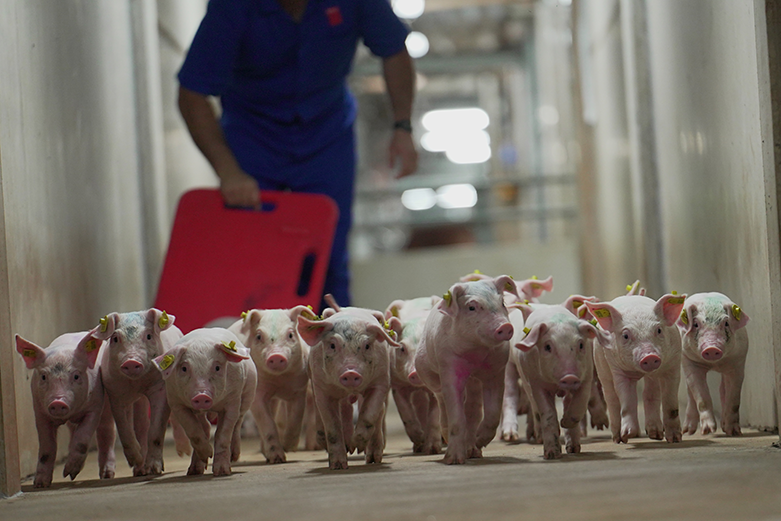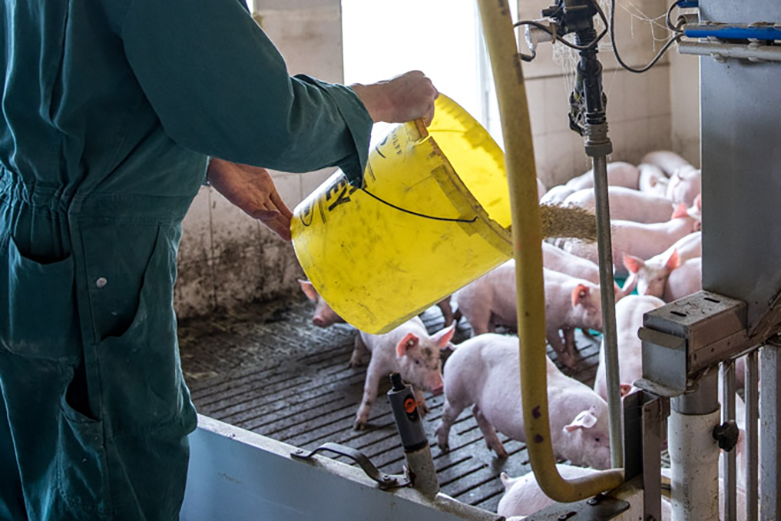Health status should be at the top of the list when managing wean-to-finish buildings, but sometimes it slides down the priority list. Operations with introduced disease challenges suffer immediate financial losses and may be at risk for further losses later.
Health status is one of four key drivers of wean-to-finish success. The other drivers are quality weaned pig, nutrient intake and marketing strategy. Focusing on these four factors equally and consistently will result in the best outcomes for wean-to-finish operations.

Keeping pigs healthy
Assume the pigs entering the wean-to-finish system are quality weaned pigs. A quality weaned pig originates from a sow farm with stable health status and the individual pigs are healthy. The pigs are uniform in age and weight and are thrifty with a good appetite. Their immune systems are strong from their adequate colostrum intake and the low-stress, comfortable environment from where they came. They have been immunised appropriately.
The goal is to maintain the health of the quality weaned pig through the grow-finish phase, capitalising on the efforts of stable sow unit and a quality weaned pig. To uphold the health status, ensure proper nutrient intake, environmental conditions, and prevent pathogens from entering the farm with a biosecurity plan.
Most wean-to-finish units address nutrient intake and environmental conditions adequately. It’s the development and implementation of a biosecurity plan that falls by the wayside.
To reduce risk, focus on these three areas first:
Add one or more biosecurity layers
When many facilities were built, showers were not included, observes Sebastian Casiro, Technical Services PIC UK.
“Your biosecurity plan will obviously involve working with what you have, but adding additional physical biosecurity layers to the unit, if possible, can strongly reduce risk of pathogen entry,” he says. “Without hesitation, I would say that adding showers is the best way to ensuring total adherence to many critical biosecurity protocols that cut risk substantially. Strongly consider it.”
Properly disinfect
Pathogens can quickly enter your farm through pig contact with contaminated loading bays, transport trucks and other equipment.
“They must be cleaned properly every time,” explains Tim Snider, PIC Regional Health Director for the EMEAR region. “A contaminated bay or truck will offset all the protocols implemented at the breeding herd to protect the health status of the quality wean pigs you’re receiving. This is a high-risk point that needs to be managed closely.”
To disinfect, use power washers and appropriate cleaners/disinfectants with correct contact and drying times.
Audit, review and update
“To make sure the plan and its implementation are working, your herd veterinarian should do an in-depth, formal audit annually,” explains Sebastian Casiro. “This includes examining any issues from the past 12 months, updating protocols and so on.
You should also work with your veterinarian with informal audits in between to address any risk areas identified.”
Biosecurity resources
Need resources to help develop a biosecurity plan? Check out PIC’s BioShield biosecurity manual at www.pic.com and biosecurity training videos at www.gb.pic.com. For help with biosecurity or to learn more about the resources available, contact your PIC team.



